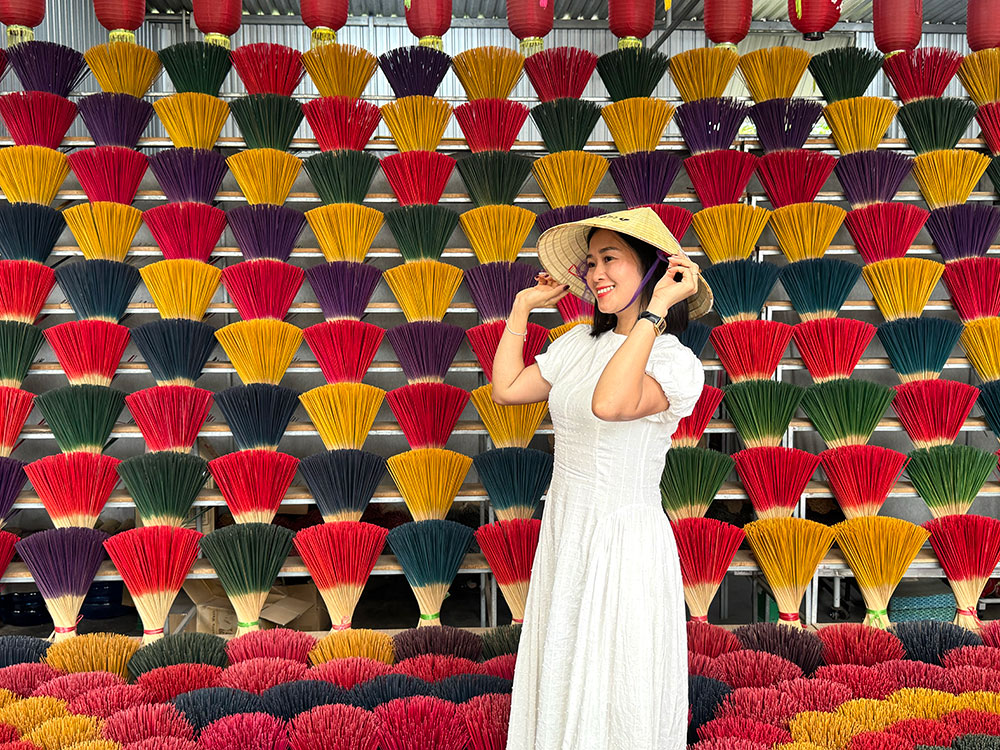


Hue is a city brimming with stories. The kings of the Nguyen Dynasty built their feudal capital along the fertile riverbanks and forested hills, but their imperial legacy is just one reason to visit. The city’s refined cuisine is legendary, and its leafy streets are lined with moss-covered pagodas, Art Deco mansions, and vibrant markets. Running through it all is the Perfume River, setting a leisurely pace that the city happily follows.
A UNESCO World Heritage Site, the Hue Imperial Citadel represents the pinnacle of Nguyen Dynasty architecture. Built hundreds of years ago, the sprawling complex houses over 100 magnificent structures, including Ngo Mon Gate, Dien Tho Palace, the Forbidden Purple City, and Thai Hoa Palace. Explore the palaces, pavilions, and theaters to get a glimpse of Vietnam’s last royal dynasty, and make time to visit the tombs of Emperors Tu Duc, Minh Mang, and Khai Dinh.
Perched on a hillside, Khai Dinh’s tomb is a striking fusion of Vietnamese and European architecture. The exterior, darkened over time, exudes a Gothic feel, while the interior dazzles with colorful ceramic mosaics. Khai Dinh, known as the most eccentric Nguyen king, embraced French colonial influences and spared no expense on his tomb. The site features climbing platforms rather than flat landscaped grounds and incorporates Chinese, Vietnamese, French, and Cambodian design elements. The contrast between the tomb’s modest exterior and opulent interior is breathtaking.
The resting place of the poetic and romantic Emperor Tu Duc, this tomb is designed to harmonize with nature. It is considered one of the four most beautiful tombs on Hue’s tourist map and is recognized by UNESCO as a World Cultural Heritage Site. Tu Duc, who ruled during a period of French colonial pressure, chose to retreat into art, poetry, and the construction of his tomb rather than fight a losing battle. He often visited the site to write poetry and fish in its lake. Rumor has it that his true burial location remains unknown, hidden to protect his treasures.between the tomb’s modest exterior and opulent interior is breathtaking.
Located on the outskirts of Hue, Thuy Xuan is famous for its traditional incense-making craft. The aromatic incense produced here plays an important role in religious ceremonies and local culture. Visitors can watch artisans at work and immerse themselves in the village’s serene atmosphere, experiencing a unique slice of Hue life.
A journey along the Perfume River offers a gentle, scenic way to experience Hue. The Moon River Cruise allows travelers to enjoy the harmonious flow of royal culture and traditional folklore while soaking in the city’s tranquil beauty.
Pilgrimage Village